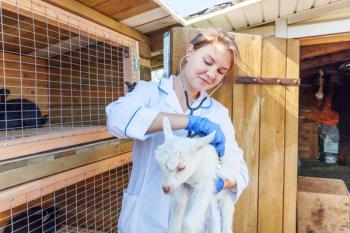
Editors' Guest: My eye-opening experience in editing a veterinary journal
After several years in small-animal practice and a lengthy stint in industry work, I recently began working as a contributing technical editor for Veterinary Medicine.
After several years in small-animal practice and a lengthy stint in industry work, I recently began working as a contributing technical editor for Veterinary Medicine. Other than writing my master's thesis, I had had little editing experience. Looking casually through an issue of Veterinary Medicine, one might think that publishing this journal would be rather straightforward: The authors send an electronic copy of a manuscript for publication, and after a couple of minor edits, it is ready to go to press. Well, let me tell you, it takes an extraordinary effort by many individuals to make each and every issue come to fruition. Frankly, it is mind-boggling.
Dana L. Fertig, DVM, MS
HOW A MANUSCRIPT BECOMES AN ARTICLE
Once a manuscript is submitted, it is sent to at least two specialists for peer review. The reviewers carefully evaluate the paper's accuracy, thoroughness, and suitability. Manuscripts that may be acceptable for publication are usually returned to the authors with the reviewers' comments for revision, oftentimes extensive.
If a paper is accepted for publication, it typically is first edited by a skilled veterinarian technical editor and then by a nonveterinarian editor with extensive publishing experience—it is amazing how much more readable this initial editing often makes a manuscript. Next comes a second rigorous technical edit by a staff veterinarian for accuracy and completeness.
Believe me, it takes numerous reads of each manuscript to complete these technical edits. Each time I re-read the manuscript, I find things I overlooked. My copies of Dorland's, Saunders, and American Heritage plus countless veterinary medical reference texts and other journals are referred to time and time again. For example, when do you use radiography and when do you use radiology? Are all the dosages correct? Does this abnormal test result jibe with the differential diagnoses? What was the indication for prescribing that drug? Are the reference range units accurate? Did the author address all of the reviewer comments?
And what about the references? Do they match the point made in the manuscript —got to check. Realistically, I would read the manuscript seven to 10 times in the initial stage.
Finally, the manuscript moves out of the editors' hands and into the art director's, who figures out how this manuscript and its supportive photos, tables, and charts will actually be placed in the journal.
We are getting closer to print, but we're not there yet.
Once the article is in a preprint stage, the editors (both veterinarian and nonveterinarian) review the layout for fit and proper placement of photos, tables, and sidebars; recheck the punctuation, grammar, and spelling throughout the article; and insert subheadings and callouts.
Finally, all the editors review the article just as it is intended to be printed. At this point, changes are usually minor, but the article must be looked at again to make sure the references are in order, the tables and graphics are all correctly cited, and the captions are accurate. After being signed off by all the editors and the art director, the article is ready for print—whew! And Ihaven't even touched on the video and audio article production for Veterinary Medicine Digital...
FINAL THOUGHT
So, practitioners, take comfort in knowing that this journal does everything possible to guarantee excellence. And as you read this issue, think about all the people and time it takes to bring this journal to you every month—it is much more than I had ever imagined.
Dr. Dana Fertig is a contributing technical editor at Veterinary Medicine and does consulting work for the veterinary industry.
Newsletter
From exam room tips to practice management insights, get trusted veterinary news delivered straight to your inbox—subscribe to dvm360.




